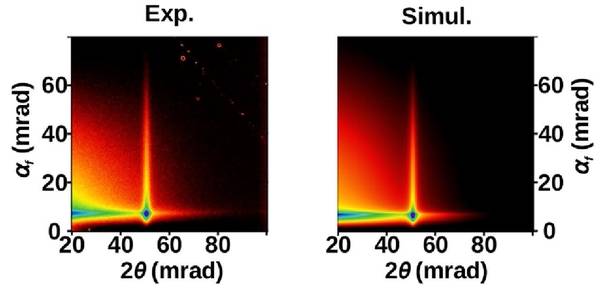Self-organization of nanoparticles soft-landed on graphene
Sébastien Linas (currently at the LMI), Clément Albin, Laurent Bardotti et Florent Tournus from the “Magnetic nanostructures” team have just published, in collaboration with colleagues from Grenoble, an article entitled “ Moiré induced organization of size selected Pt clusters soft landed on epitaxial graphene “ in the journal Scientific Reports
 The elaboration of a 2D lattice of nanoparticles is of great interest both from a fundamental point of view and for applications. One widely used path consists in using template surfaces with specific sites regularly distributed. Such a 2D lattice can be obtained with the moiré phenomenon, which appears when two crystalline structures of slightly different cell parameters are stacked. Thus, a graphene layer epitaxially grown on a Ir(111) surface displays a 2D spatial modulation corresponding to a hexagonal lattice of 2.5 nm cell parameter. This moiré has already been successfully used for the growth of nanoparticle arrays (islands) by atomic deposition. In the present study, the authors have followed an original approach where preformed and size-selected clusters (Pt particles of 1.5 nm diameter) are deposited on a graphene/Ir(111) surface displaying a moiré lattice. By using grazing incidence x-ray scattering measurements (GISAXS technique), performed at the ESRF, the organization of particles on specific sites of the moiré lattice has been put into evidence and quantified. This organization, which is partial, indicates that the nanoparticles are sensitive to the moiré pattern and demonstrates that cluster deposition is a promising route.
The elaboration of a 2D lattice of nanoparticles is of great interest both from a fundamental point of view and for applications. One widely used path consists in using template surfaces with specific sites regularly distributed. Such a 2D lattice can be obtained with the moiré phenomenon, which appears when two crystalline structures of slightly different cell parameters are stacked. Thus, a graphene layer epitaxially grown on a Ir(111) surface displays a 2D spatial modulation corresponding to a hexagonal lattice of 2.5 nm cell parameter. This moiré has already been successfully used for the growth of nanoparticle arrays (islands) by atomic deposition. In the present study, the authors have followed an original approach where preformed and size-selected clusters (Pt particles of 1.5 nm diameter) are deposited on a graphene/Ir(111) surface displaying a moiré lattice. By using grazing incidence x-ray scattering measurements (GISAXS technique), performed at the ESRF, the organization of particles on specific sites of the moiré lattice has been put into evidence and quantified. This organization, which is partial, indicates that the nanoparticles are sensitive to the moiré pattern and demonstrates that cluster deposition is a promising route.


















